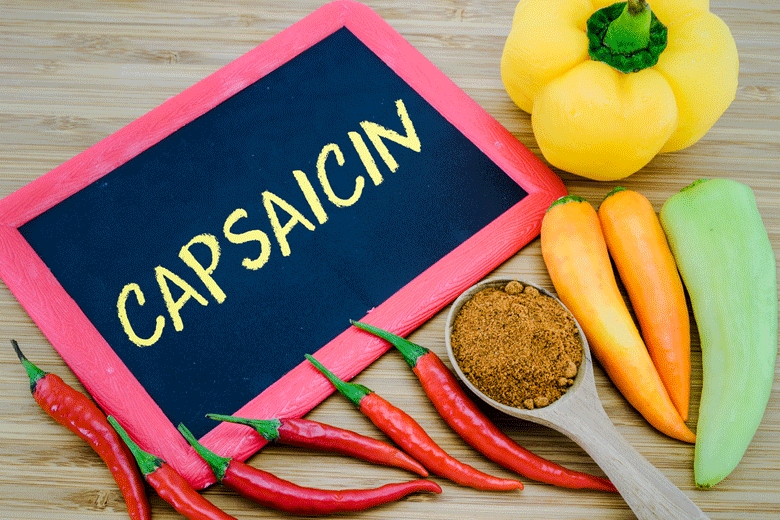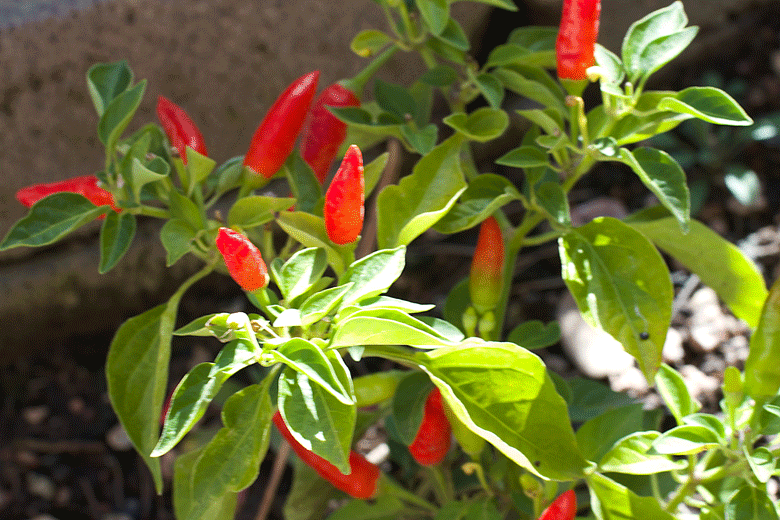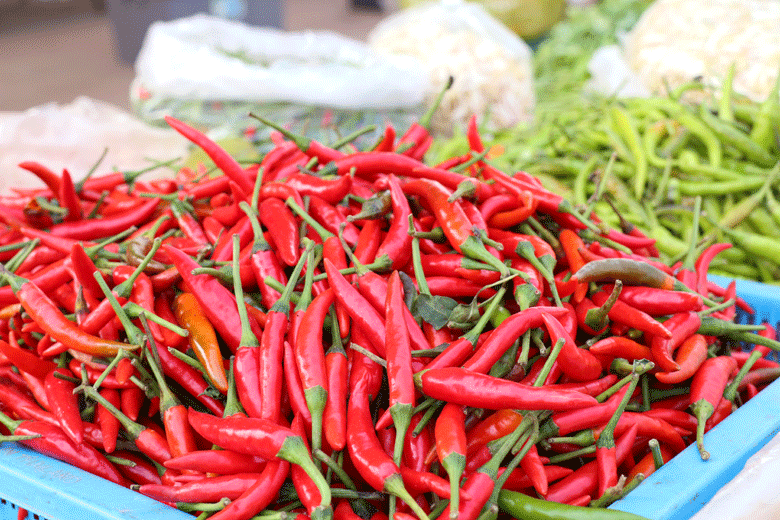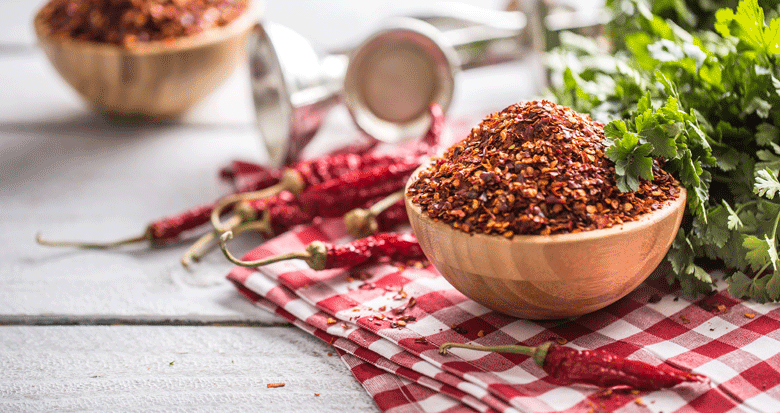
Ways in which Chillies are used
Chinese cooking is based on seven basic flavours: sour, pungent, hot, sweet, bitter, aromatic and salty. Chinese cooking aims to achieve a perfect balance in these tastes.
Chillies are used to provide the pungency and hot elements of these basic flavours in spicy Chinese food They are a must have ingredient found many a Chinese cook’s pantry. To not have Chillies in some form or the other (particularly in Inner China) is virtually unheard of
unheard of
Indeed. In Sichuan province and other regions where most of the cooking is pungent ,Chilllies are used as an ingredient in most dishes. In this region, Chillies are combined with a liberal use of garlic and Sichuan to produce a cuisine that is world famous. So much so that in 2011, Chengdu, the capital of Sichuan province ,was declared a city of gastronomy It was given this accolade by UNESCO in recognition of the excellent cuisine that comes from the region.
Much of the cuisine in China involves quick cooking in a wok. Woks are used to stir fry ingredients at high temperatures. In this way, the freshness and crispness of ingredients is retained. Chillies are typically introduced at the beginning of cooking . They are typically added to oil that has been heated in the wok. In this way the oil gets infused with the flavour of the Chillies
The following are examples of how Chillies are used in Chinese cooking.
Fresh Chillies

A definite favourite
According to the Food and Agricultural Organisation of the United Nations, China produced 326040 tonnes of dried Chillies and 19007248 tonnes of green Chillies in 2019. China is the world’s largest producer of green Chillies. When considering that most of this production is consumed domestically, it becomes quite clear that China consumes a lot of fresh Chillies.
Green Chillies are sauteed in a dish called hǔpí jiān jiāo ( cow horn or goat horn Chillies fried in oil in a wok). Chillies are also to flavour various stir-fried dishes, like Hunan beef (spicy stir- fried beef) , Qīngjiāo Ròu Sī (pork and pepper stir-fry), and crispy Chilli chicken.
fried beef) , Qīngjiāo Ròu Sī (pork and pepper stir-fry), and crispy Chilli chicken.
Fresh Chillies are also used in stir-fried rice dishes, sauces like Tengjiao Gongqing sauce with Birds eye Chillies . Tengjiao Gongqing uses Tengjiao oil together with fresh Chillies. This oil is made from green Sichuan pepper.
Another dish made with fresh Chillies is Xianjiao Yoa Pian (scalded kidneys with fresh Chillies).
Besides these dishes, one of the main uses of fresh Chillies is as a side dish or snack. They are eaten raw with salt. Chillies are also chopped up and served in a separate bowl with meals. These are then sprinkled over food to give it fresh pungency and flavour. When served in this way, rice vinegar and salt may be added.
Another use for Chilllies in Chinese cuisine is in salads. An example of a salad made in China with Chillies is Chinese cucumber salad
Dried Chillies.

The main ingredient
Dried Chillies are the main way of utilising Chillies in Chinese cooking. They are used whole in dishes like gōng bǎo jī dīngung (fried chicken with whole Chillies) and Chongqing Chilli chicken (Chicken that is virtually buried under Chillies during cooking)
Dried Chillies are also used in stir-fried dishes like Yu Xiang Tofu . The Chaotianjiao Chilli (facing heaven Chilli), in particular, is used in a whole dried form because of its attractive appearance. It is a small conical Chilli with a striking red colour and medium heat.
An important element in Chinese is colour. The red colour that Chilles like dried Erjingtiaos provide is is highly prized by Chinese cooks.
Dried Chillies are often ground into flakes and Chilli powers used for seasoning. This can be added to food while it is being prepared, or used to add flavour after it has been cooked. Before the Chillies are ground, they are sometimes fried in oil.
An example of a dish made with dried Chilli flakes is Mapo Tofu. Mapo Tofu is one of the top ten most popular Chinese foods in China and in other parts of the world. It is a famous Sichuan dish made with firm Tofu ( bean curd) , beef , Chilli flakes and Sichuan pepper. The combination of spices makes the dish mouth numbingly hot.
This numbness brought on by Sichuan pepper is a sensation that is particularly enjoyed in the Sichuan region. Indeed. Its citrus-like flavour accompanied by the pleasant tingling is part and parcel of the region’s cuisine.
Chilli Oils

Red oil
Making Chilli oils is an important part of the use of Chillies in Chinese cooking.Chilli oils are made by combining oil with Chillies, Sichuan peppercorns, ginger, sesame seeds and other spices. This Chilli oil, called “Red oil” is used to season many Chinese meals, but especially Szechuan style dishes.
“Laoganma” Crisp Chilli oil is another example of a Chilli oil found in Chinese cuisine. Laogan Moa (Old godmother|) is the brand name of a company well known throughout China for making Chilli oils and sauces. These Chilli oils are all made to traditional recipes. They are widely used in Chinese cooking.
Laogan Moa (Old godmother|) is the brand name of a company well known throughout China for making Chilli oils and sauces. These Chilli oils are all made to traditional recipes. They are widely used in Chinese cooking.
A Chilli oil that gives dishes like Gongboa Chicken ( chicken fried with dried Chillies) a scorched flavour. This dish is made by sizzling Chillies in very hot oil. The oil gets infused with the flavour of the Chillies. It is then used with Sichuan peppers as the base for vegetable stir-fry, and many other recipes including the one mentioned above. It can be made with any vegetable oil, but peanut oil is generally preferred in China for making Chilli oils.
Various Chillies are used to make oils. The Erjingtiao Chilli is a favourite. It used to make Chilli oil because of its rich red colour and fragrant flavour. The Xiaomila (little rice Chilli) is another favourite for making oils. Lajiaoyou (Sichuan Chilli oil) is a typical recipe for making Chilli oil with Little Rice Chillies.
Image Credits
Alpha/ CC BY NC 2.0 / via Flickr
king.f / CC BY NC SA 2.0 / via Flickr
The Q Speaks / CC BY NC SA 2.0 / via Flickr











 Sauces and pastes
Sauces and pastes






 fried beef) ,
fried beef) , 


 Laogan Moa (Old godmother|) is the brand name of a company well known throughout China for making Chilli oils and sauces. These Chilli oils are all made to traditional recipes. They are widely used in Chinese cooking.
Laogan Moa (Old godmother|) is the brand name of a company well known throughout China for making Chilli oils and sauces. These Chilli oils are all made to traditional recipes. They are widely used in Chinese cooking.